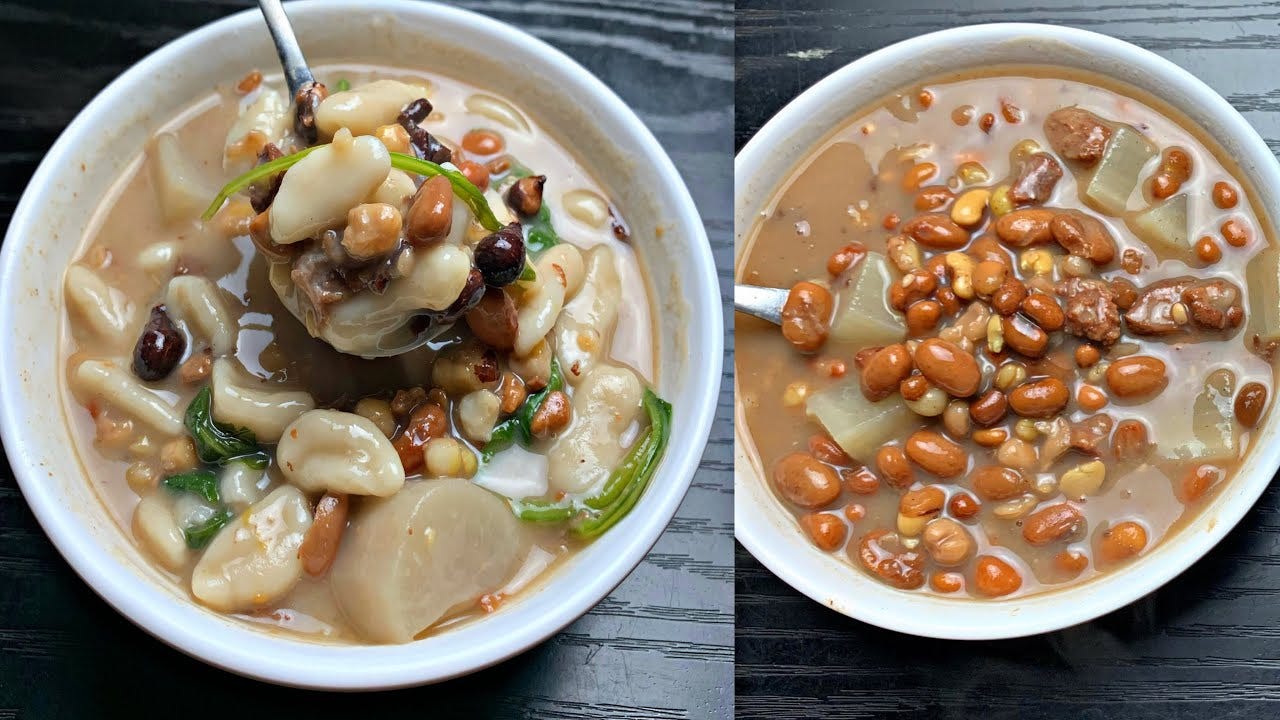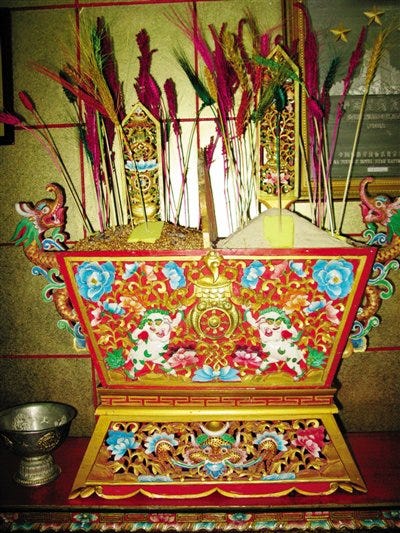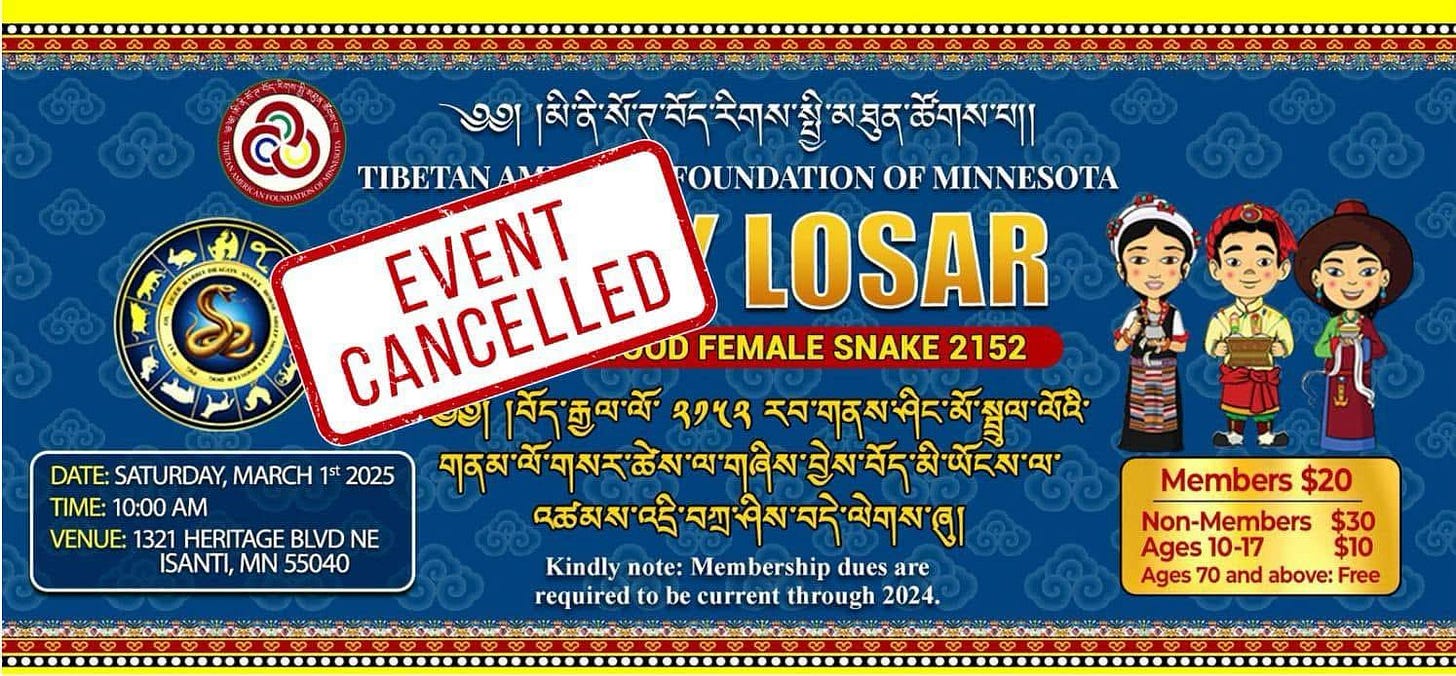洛萨扎西德勒 | 藏历新年百科:什么是洛萨?Losar Tashi Delek: What is Losar?
་༄༅། ། འཛམ་གླིང་བོད་མི་ཡོང་སུ་ལ་ལོ་སར་བཀྲ་ཤིས་བདེ་ལེགས་ཞུ། 敬祝全球藏人藏历新年快乐!
༄༅། ། བོད་རབ་རྒྱན་ཤིང་མོ་སྦྲལ་ལོའི་གནམ་ལོ་གསར་ཚེས་ལ་བཀྲ་ཤིས་རྟེན་འབྲེལ་ཞུ།
སེམས་ཅན་ཀུན་ལ་ལོ་གསར་བའི་ནང་ལུས་ལ་ན་ཚ་མེད་ཅིང་བྱ་བ་ལམ་འགྲོ་ཡོང་བའི་བཀྲ་ཤིས་སྨོན་འདུན་ཞུ།
华语青年挺藏会敬祝各位藏历新年快乐!
在这崭新的年岁里,献上吉祥与安康的祝福,
愿图博大地四时皆顺,祥瑞常伴。
愿众生身心无恙,无病无忧,所行皆坦途,所愿皆如愿。
Losar Tashi Delek! We, Chinese Youth Stand for Tibet, sincerely wish everyone a Happy Tibetan New Year!
In this new year, we extend our blessings of auspiciousness and well-being.
May the land of Tibet enjoy harmony in all seasons, with good fortune always by its side.
May all beings be safe in body and mind, free from illness and sorrow, with smooth paths ahead and all wishes fulfilled.
洛萨(Losar,藏文:ལོ་གསར།) 是藏历新年的藏语名称,意为“新年”或“新岁”。“洛”(ལོ།,Lo) 指“年”,“萨”(གསར།,Sar)指“新”,合起来就是“新年”。
洛萨最早起源于西藏本土的农耕与宗教祭祀传统,后来与藏传佛教文化融合,成为西藏、以及尼泊尔、不丹、印度等地藏族和喜马拉雅地区民族的重要节日。
洛萨的日期按照藏历计算,一般在公历2月至3月之间,但具体日期每年不同。 有时与汉族的春节重合,但通常相差几天到几周。
Losar (ལོ་གསར།) is the Tibetan name for the Tibetan New Year, meaning "New Year" or "New Age." "Lo" (ལོ།, Lo) means "year," and "Sar" (གསར།, Sar) means "new."
Together, Losar translates to "New Year."
Losar originally originated from Tibet's indigenous agricultural and religious rituals. Over time, it merged with Tibetan Buddhist culture and became an important festival for Tibetans, as well as for communities in Nepal, Bhutan, India, and other Himalayan regions.
Losar is determined according to the Tibetan lunar calendar and usually falls between February and March in the Gregorian calendar. Occasionally, it coincides with the Lunar New Year, but more often, there is a gap of a few days to several weeks between the two.
གངས་རི་ར་བའི་བསྐོར་བའི་ཞིང་ཁམས་འདིར།།
惟願雪山環繞此境中
May this land, encircled by snowy mountains,
ཕན་དང་བདེ་བ་མ་ལུས་འབྱུང་བའི་གཞི།།
無余利益安樂出生處
Be a source of boundless benefit and happiness.
སྦྱན་རས་གཟིགས་དབང་བསྟན་འཛིན་རྒྱ་མཚོ་ཡི།།
持法大海即世间自在
May the great ocean of Avalokiteśvara, the sovereign of Dharma,
ཞལ་པད་སྲིད་མཐའི་བར་དུ་བརྟན་གྱུར་ཅིག།
愿尊莲法永驻轮回尽
Remain steadfast until the very end of existence.
2025藏历新年:
木蛇年 ༼ཤིང་མོ་སྦྲུལ་ལོ།༽ 2025 Tibetan New Year: The Year of the Wood Snake
• 藏历年份:2152年(根据藏历纪年)/ Tibetan Year: 2152
• 新年时间:2025年2月28日(公历)/ New Year Date: February 28, 2025 (Gregorian calendar)
• 生肖:蛇 / Zodiac Sign: Snake
• 五行:木 / Element: Wood
藏历新年的习俗与庆祝方式
Losar Customs and Celebrations
1. 过年前的准备 / Preparations Before New Year
• 清净(གཙང་སེལ། Tsangsel):人们会在新年前彻底打扫房屋,将过去一年的灰尘污垢彻底清理并将其用一种特殊方式出处理;在彻底清理干净后需要将家中所有物品及房间用柏香树叶熏燻,象征着驱除旧年的不祥和迎接新年的吉祥。
• House cleaning (གཙང་སེལ། Tsangsel): People thoroughly clean their homes, removing all dust and dirt from the past year. The collected debris is then disposed of in a special manner. After the cleaning is complete, all household items and rooms are fumigated with juniper leaves, symbolizing the expulsion of misfortune from the old year and the welcoming of auspiciousness for the new year.
• 传统食物(བག་ལེབ། Baglep):“沃来”家家户户都会制作一种特殊的炸饼,多姿多彩的“沃来”在新年拜年时,大家会以形态、味道给予相对应的评价。
• Traditional Food (བག་ལེབ། Baglep): Every household makes a special type of fried pastry called "baglep". During New Year visits, people would comment on the appearance and taste of these colorful baglep accordingly.
• 煮古突(དགུ་ཐུག Gutug):藏历年的前一天晚上,家人会一起吃古突(在卫藏地区是一种带有特殊寓意的藏式汤圆,被包裹着九种食物即九种含义的汤圆),在安多及康巴地区则是一锅以九种食材的面食或者是米粥来呈现。
• Cooking Gutug (དགུ་ཐུག Gutug): On the eve of the Tibetan New Year, families gather to eat Gutug. In Ü-Tsang, it is a special type of Tibetan dumpling with symbolic meaning, filled with nine different ingredients, each representing a specific concept. In Amdo and Kham, it is instead prepared as a noodle dish or rice porridge made with nine different ingredients.
• 圣地巡礼(ཁྱོན་མཇལ། Khyon Mjal):在过去一年最后一天【晚上23:00—05:00】,寺院会将所有佛堂、护法殿及神殿的门都开启,让所有前来朝拜的信众进行朝拜,并完成完整的朝拜仪式。
• Pilgrimage (ཁྱོན་མཇལ། Khyon mjal): On the last day of the past year, from 11:00 PM to 5:00 AM, monasteries open the doors of all Buddha halls, protector chapels, and sacred shrines, allowing devotees to enter for worship and perform the full prayer ritual.
2. 大年初一(藏历正月初一)/ Losar Day (1st Day of the Tibetan Year)
• 早晨迎水(ཆུ་འཛུགས།):一大早,家庭中的少年会去河边或水井取“新年第一桶水”,象征纯净和好运。
• Fetching the first water (ཆུ་འཛུགས། Chu dzuk): Early in the morning, the young members of the family go to the river or well to collect the first bucket of water for the New Year, symbolizing purity and good fortune.
• 煨桑 (བསང་གསོལ།): 清晨家中的男性成員會在家中逕行火供祭祀祈福。
• Smoke offering ( Sang offering) : In the early morning, the male members of the household perform a fire offering ritual at home to pray for blessings.
• 敬献“切玛”(ཕྱེ་མར། Chöma):家中摆放“切玛”(一种盛满炒麦和青稞的小盒),寓意五谷丰登和幸福安康。
• Offering Chöma (ཕྱེ་མར། Chöma): A Chöma box, filled with roasted barley and wheat, is placed in the home as a symbol of a bountiful harvest and well-being.
• 祭祀仪式:家人会向佛龛或家中神位敬香、点酥油灯,祈求新年吉祥。
• Offering ritual: Family members offer incense and light butter lamps at the household shrine or deity altar, praying for blessings in the New Year.
• 拜年与祝福:人们互相祝福常说“བཀྲ་ཤིས་བདེ་ལེགས།(Tashi Delek)”意思是“吉祥如意”。
• Exchanging New Year Greetings: Tibetans greet each other with བཀྲ་ཤིས་བདེ་ལེགས། (Tashi Delek), meaning “Auspicious Happiness.”
3. 大年初二及之后 / The Second and Following Days
• 走亲访友:藏人会穿上节日盛装,走亲访友,交换祝福。
• Visiting Family and Friends: People wear traditional clothing and visit relatives to exchange greetings.
• 敬奉高僧:许多人会去寺庙朝拜,听取喇嘛的佛法开示,祈求新年的好运。
• Visiting monasteries: Many Tibetans visit monasteries to seek blessings and listen to teachings from Lamas, praying for an auspicious new year.
4. 藏历十三 / The Thirteenth Day
• 瞻佛节(གོས་སྐུ):一项盛大的宗教仪式,僧众会将一副巨型唐卡背至山顶后,将唐卡铺满整座山,让佛帘显现供信徒瞻仰和朝拜,以获得加持和积累功德。
• Buddha Unveiling Festival (གོས་སྐུ): A grand religious ceremony where monks carry a giant thangka to the mountaintop and unfurl it across the entire slope. Devotees gather to venerate the sacred image, seeking blessings and accumulating merit.
5. 藏历十五 / The Fifteenth Day
• 酥油花佛巡礼(ཆོ་འཕྲུལ་དུས་ཆེན།):在塔尔寺藏历十五这一天,寺院会将过去几个月精心制作的酥油花佛殿门开启,让所有前来朝拜的信众朝拜,并进行完整的朝拜仪式。在拉萨大昭寺等地,也会举行盛大的祈愿法会,并点燃酥油灯,照亮夜空。
• Chotrul Duchen (ཆོ་འཕྲུལ་དུས་ཆེན།): On the 15th day of the Tibetan calendar at Kumbum Champa Ling, the doors of the butter sculpture Buddha hall are opened, allowing devotees to worship the meticulously crafted sculptures and complete the full pilgrimage ritual. In places like Lhasa’s Jokhang Temple, large-scale prayer ceremonies are held, and butter lamps are lit, illuminating the night in devotion.
藏历新年不仅是一个阖家团圆的时刻,还具有浓厚的宗教色彩,体现了藏人对自然、宗教和社会和谐的尊重。在这段时间,人们强调感恩、祝福、净化和新的开始,这些价值观贯穿整个节日的庆祝活动。
Losar is not only a time for family reunions but also a festival rich in religious significance, reflecting the Tibetan people's respect for nature, religion, and social harmony. During this period, gratitude, blessings, purification, and new beginnings are emphasized, and these values are woven throughout the celebrations.
今年的藏历新年不同于往昔,喜悦与欢腾被沉痛与祈祷所取代。日喀则定日的地震造成了严重的人员伤亡,令人痛心;与此同时,尊者的二哥嘉乐顿珠的离世,更使全球藏人社群深感惋惜。
按照藏地传统,若有至亲、长者或高僧离世,人们会自发停止新年庆祝,不饮酒作乐,不燃放鞭炮,不歌舞欢腾。这一习俗,正如现代社会在伟人辞世时降半旗致哀,既是对逝者的尊重,也体现出逝者的敬意与哀思。
藏人行政中央也呼吁各地藏人社区取消传统的锅庄舞会,以示哀悼,各地藏人社区中心相继暂停锅庄舞会,后取消了新年集会庆祝活动。这不仅是对逝者的深切缅怀,更展现了藏人社会在苦难中守望相助、共度时艰的团结精神。
然而,藏历新年纵然没有歌舞升平,人们依旧可以用另一种方式迎接新岁——点燃一盏酥油灯,为灾区祈福;吟诵一遍经文,为亡者超度;与亲人相聚于共进一餐。或许,诵念经文时的敬意,比喧闹中的欢庆,更能彰显藏人社会在悲痛中的坚韧,也更能让新年的祝福于心灵深处,在静默中诉说希望,在祈愿中迎接光明。
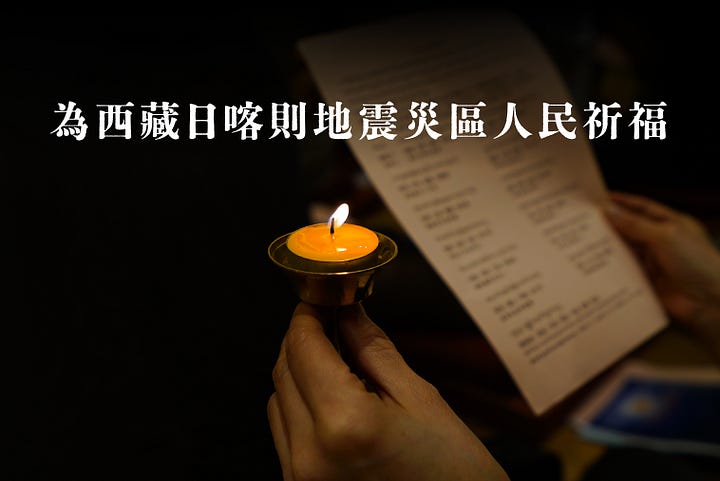

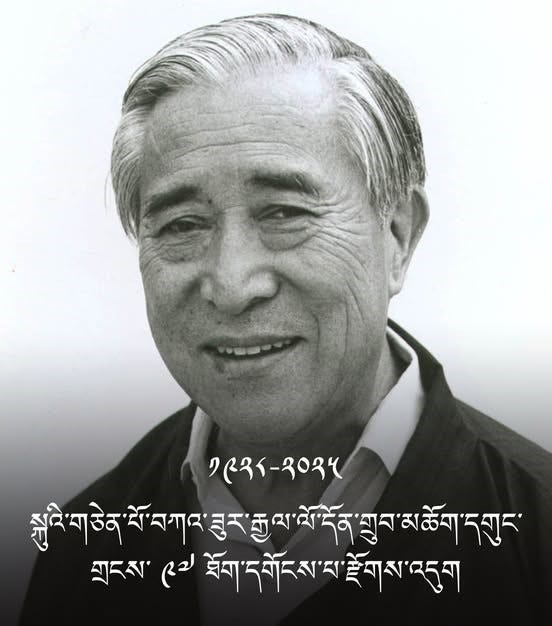
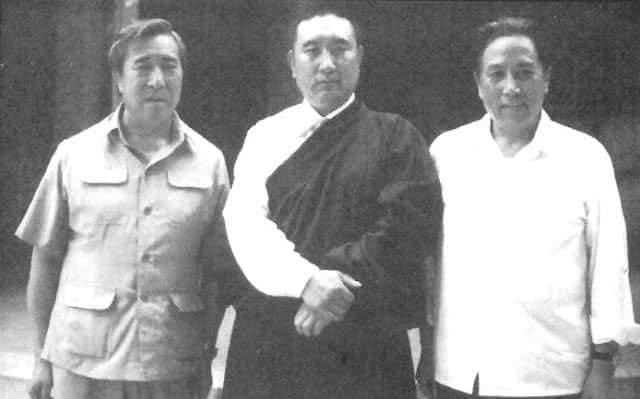
This year’s Tibetan New Year is unlike previous ones—joy and festivity have been replaced by sorrow and praying. The earthquake in Tingri, Shigatse, has caused severe casualties, bringing deep grief; at the same time, the passing of His Holiness’s elder brother, Gyalo Thondup, has left the global Tibetan community in mourning.
According to Tibetan tradition, when a close relative, elder, or high lama passes away, people spontaneously cease New Year celebrations—they refrain from drinking, revelry, fireworks, and dancing. This custom, much like lowering flags to half staff in modern society when a great leader passes, is both an expression of respect for the deceased and a reflection of deep reverence and grief.
The Central Tibetan Administration has also called on Tibetan communities worldwide to cancel traditional Guozhuang dance gatherings as a sign of mourning. In response, Tibetan community centers in various regions have successively cancel their New Year celebrations. This is not only a profound tribute to the departed but also a testament to the Tibetan society’s spirit of solidarity—standing together through hardship and supporting one another in times of sorrow.
However, even without song and dance, people can still welcome the new year in other meaningful ways—lighting a butter lamp to pray for those in disaster-stricken areas, chanting a scripture for the deceased, or simply sharing a meal with loved ones. Perhaps the sincerity in reciting prayers speaks louder than the clamor of festivities, embodying the resilience of the Tibetan community in times of sorrow. And perhaps, in silent remembrance, the blessings of the new year find deeper resonance—whispering hope in the stillness and embracing light through prayer.
ལོ་གསར་བཀྲ་ཤིས་བདེ་ལེགས་ཞུ།(Losar Tashi Delek Shok)
——华语青年挺藏会祝你藏历新年吉祥如意!
Chinese Youth Stand For Tibet Wish You Losar Tashi Delek!
文:Tashi Tara 翻译:Dechen 编辑:Renchin
校对:Tashi Dechen Renchin 制图:Mo Qilin







